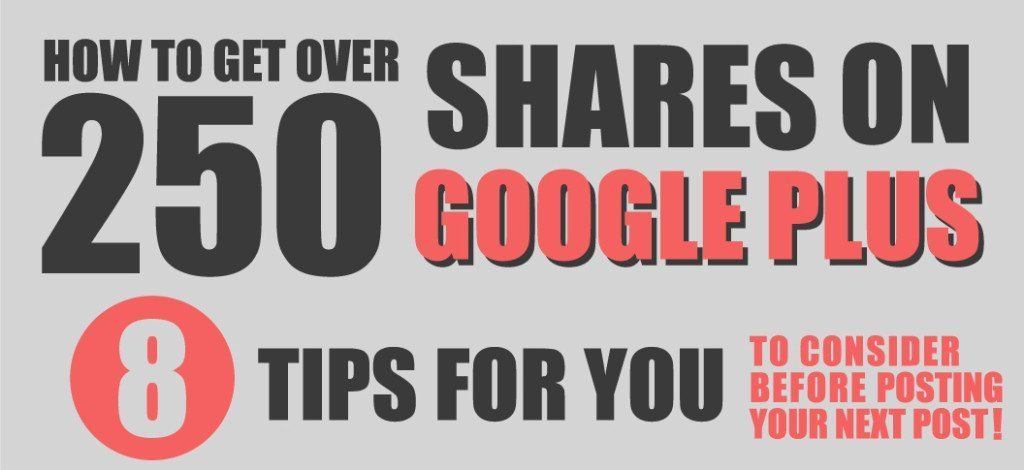Did you see my recent post about the differences between Google Authorship and Publisher? That post is the closest post I’ve had to a super post as it’s been shared over 250 times on Google Plus and has been linked to more times than I can easily count – all good stuff. Now, it would be great if every post was shared over 250 times on Google Plus however that is not the case, and so, I’ve had a look at that post to try ascertain why it was shared so much in the hope that you can apply the below to your own posts. Let’s jump in!
The benefits of having a good graphic, be it an infographic or not, can not be understated. Some posts I’ve shared on Google Plus which didn’t have large images have died a slow unshared death whereas adding an eye catching, retail space taking graphic really helps push the needle. Infographics are a great way of getting your message out and people tend to share them like mad. Oftentimes the graphic will be the first thing someone will see about your post so don’t take shortcuts here. My Google Plus post which got over 250 shares had a large, colourful eye catching infographic.
2) Post Title – None of the Fancy Stuff
I’m a bad man for alliterative titles and sometimes thinking I’m a writer in some tabloid as I try to conjure up interesting attention grabbing titles but for the “super-viral” post I kept it simple. The title was “What’s The Difference Between Google Authorship & Publisher?” – straight forward and to the point. Keeping it simple lets people know exactly what to expect. Also, more creative and colourful titles might put people off sharing. I’m going to keep my titles all plain Jane for the next while to see how it pans out.
3) Post Formatting – No Bold is Bold!
On Google Plus you can apply some simple formatting to your updates. When sharing I always put the title in bold and then apply some italics and more emboldening throughout the body of the update. Using formatting allows potential resharers to quickly skim your update and, maybe, find some text that pushes them over the edge and seals the sharing deal. GPlusExpertise has a great cheat sheet on how to format your post and Dustin Stout talks about the formatting of a perfect Google Plus post, worth a read.
4) Use of You – The Eyeball Magnet of the Web
It’s all about YOU! In most of my Google Plus posts (and blog posts and Facebook/Twitter/LinkedIn posts – pretty much any post anywhere online!) I use the word you and I try to use it towards the start of my update. Using the word you, for some reason, sucks readers in and increases the likelihood of your posts getting a share. The word You is, to my mind at least, the eyeball magnet of the web and should be used religiously. In my Google Plus post the 1st line was as follows “Have you ever wondered about the differences between #googleauthorship and publisher?” and I hope that as people were reading it in their mind they were “well, you know what Rob, I have actually, I’m going to read on”..
5) Ask A Question – Don’t Be Scared to Make Them Mull
Asking a question, especially at the start of a post, can be a way to create a bit of intrigue, suspense, mystery or a way of highlighting the answer that is about to come in a post. Asking a question at the start of the post gets the reader to mull over the possible answer and also clarifies for them what the post will more than likely be about. This will increase their engagement with the post, be it commenting, liking or sharing (and boy don’t we love sharing!). Also, by asking a question at the end of the post, you are increasing the chances of getting more engagement and spinoff conversations – all good stuff.
6) Ask to Share at the End – A Gentle Push in the Right Direction
It’s not something that I often do but when I did it for the Authorship post, and actively asked people to share it, I got the best results I’ve ever gotten. I don’t know if the simple inclusion of ” hope you like and share the graphic!” is what helped the post get over 250 shares but it might have contributed to some reshares. My take on online marketing is that it’s all the little things that form the larger cumulative and if asking people to share can have a positive impact then go for it.
7) Linking Out – No Man is an Island
Your content and update might be great but it could also be strengthened, improved or made more useful by linking out to authorities in the niche you’re writing about. In my Authorship post I linked to the Godfather of Authorship, Mark Traphagen, as well as Craig Fifield and Mervik Haums who put together useful how-to guides about authorship. Linking to those authorities strengthened my original post and some of them actually reshared the post themselves, smiles all round.
8) #Hashtags – Use #sparingly, don’t go #OTT
A few choice hashtags can help break up your Google Plus update and can also allow your content to be discovered by those who are searching using hashtags. I think there comes a point of diminishing returns with hashtags and so they should be used sparingly. In my update I used 4 in total, 2 at the end of the post and 2 weaved into it. Similar to asking people to share it’s hard to track the effectiveness of using hashtags but it is a factor which shouldn’t be overlooked when crafting your GooglePlus update.
How To Get Over 250 Shares on Google Plus – Google Plus Tips
And there you have it – 8 tips to hopefully help you get more reshares on Google Plus. Do you have any tips of your own? If so, please add them below and, well, don’t be scared to share this post ;)
More posts on Google Plus, WordPress and online marketing in general coming soon so make sure you jump on my mailing list, sign up in footer below.

